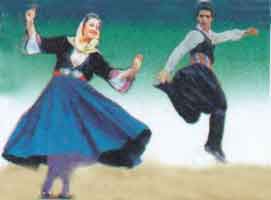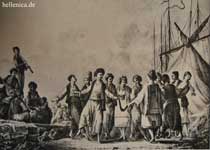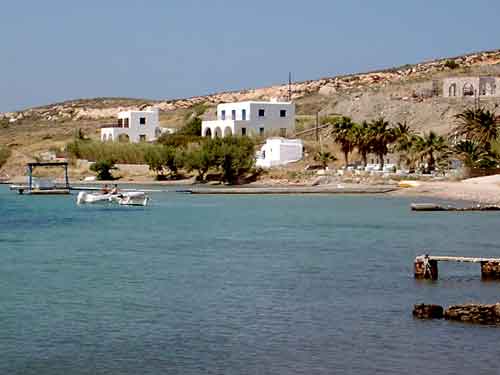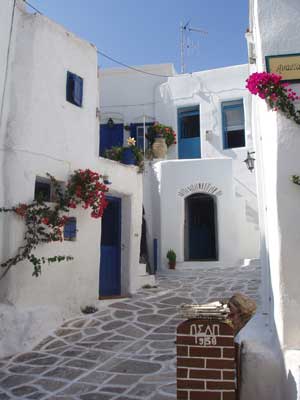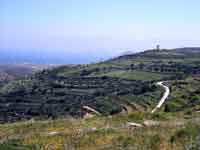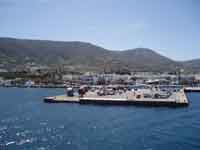.
Administrative Region : South Aegean
Regional unit : Paros
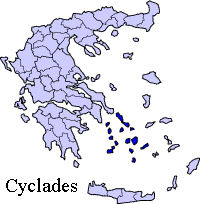
Paros (Greek: Πάρος; Venetian: Paro; English: /ˈpɛərɒs/) is an island of Greece in the central Aegean Sea. One of the Cyclades island group, it lies to the west of Naxos, from which it is separated by a channel about 8 km (5 mi) wide. It lies approximately 100 nmi (185 km) south-east of Piraeus. The Municipality of Paros includes numerous uninhabited offshore islets totaling 196.308 km² of land. Its nearest neighbor is the municipality of Antiparos, lying to its southwest.
Historically, Paros was known for its fine white marble, which gave rise to the term "Parian" to describe marble or china of similar qualities.[1] Today, abandoned marble quarries and mines can be found on the island, but Paros is primarily known as a popular tourist spot.
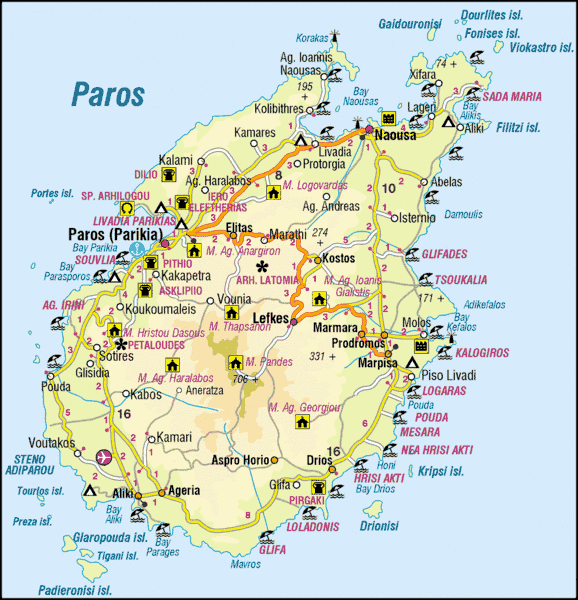
Geography
Paros' geographic co-ordinates are 37° N. lat, and 25° 10' E. long. The area is 165 km2 (64 sq mi). Its greatest length from N.E. to S.W. is 13 mi (21 km), and its greatest breadth 10 mi (16 km). The island is of a round, plump-pear shape, formed by a single mountain (724 m (2,375 ft)) sloping evenly down on all sides to a maritime plain, which is broadest on the north-east and south-west sides. The island is composed of marble, though gneiss and mica-schist are to be found in a few places. To the west of Paros lies its smaller sister island Antiparos. At its narrowest, the channel between the two islands is less than 2 km wide. A car-carrying shuttle-ferry operates all day (to and from Pounda, 3 miles south of Parikia). In addition a dozen smaller islets surround Paros.
Paros has numerous beaches including Chrissí Aktí (Golden Beach, Greece) near Drios on the east coast, at Pounda, Logaras, Piso Livadi, Naousa Bay, Parikia and Agia Irini. The constant strong wind in the strait between Paros and Naxos makes it a favoured windsurfing location.
Islands
Gaiduronisi - north of Xifara
Portes Island - west of the town of Paros
Tigani Island - southwest of Paros
Drionisi -southeast of Paros
History
Antiquity
The story that Paros was colonized by one Paros of Parrhasia, who brought with him a colony of Arcadians to the island[2] is an etymological fiction of the type which abound in Greek legend. Ancient names of the island are said to have been Plateia (or Pactia), Demetrias, Strongyli (meaning round due to the round shape of the island), Hyria, Hyleessa, Minoa and Cabarnis.[3]
A windmill in Parikia is of the traditional Cyclades design.
The island later received from Athens a colony of Ionians[4] under whom it attained a high degree of prosperity. It sent out colonies to Thasos[5] and Parium on the Hellespont. In the former colony, which was planted in the 15th or 18th Olympiad, the poet Archilochus,[6] a native of Paros, is said to have taken part. As late as 385 BC the Parians, in conjunction with Dionysius of Syracuse, founded a colony on the Illyrian island of Pharos (Hvar).[7]
Shortly before the Persian War Paros seems to have been a dependency of Naxos.[8] In the first Greco-Persian War (490 BC), Paros sided with the Persians and sent a trireme to Marathon to support them. In retaliation, the capital was besieged by an Athenian fleet under Miltiades, who demanded a fine of 100 talents. But the town offered a vigorous resistance, and the Athenians were obliged to sail away after a siege of 26 days, during which they had laid the island waste. It was at a temple of Demeter Thesmophoros in Paros that Miltiades received the wound of which he afterwards died.[9] By means of an inscription Ross was enabled to identify the site of the temple; it lies, as Herodotus suggests, on a low hill beyond the boundaries of the town.
Paros also sided with shahanshah Xerxes I of Persia against Greece in the second Greco-Persian War (480 - 479 BC), but after the battle of Artemisium the Parian contingent remained inactive at Kythnos watching the progress of events.[10] For their support of the Persians, the islanders were later punished by the Athenian war leader Themistocles, who exacted a heavy fine.[11]
Under the Delian League, the Athenian-dominated naval confederacy (477 - 404 BC), Paros paid the highest tribute of all the island members: 30 talents annually, according to the estimate of Olympiodorus (429 BC).[12] This implies that Paros was then one of the wealthiest islands in the Aegean. Little is known of the constitution of Paros, but inscriptions seem to show that it was modeled on Athenian democracy, with a boule (senate) at the head of affairs.[13] In 410 BC the Athenian general Theramenes found an oligarchy governing Paros; he deposed it and restored the democracy.[14] Paros was included in the second Athenian confederacy (the Second Athenian Empire 378 - 355 BC). In c. 357 BC, along with Chios, it severed its connection with Athens.
From the inscription of Adule we learn that the Cyclades, presumably including Paros, were subject to the Ptolemies, the Hellenistic dynasty that ruled Egypt (305 - 30 BC). Paros then became part of the Roman Empire and later of its Greek-speaking successor state, the Byzantine Empire.
Manto Mavrogenous.
Crusades
In 1204, the soldiers of the Fourth Crusade seized Constantinople and overthrew the Byzantine Empire. Although a residual Byzantine state known as the Empire of Nicaea survived the Crusader onslaught and eventually recovered Constantinople (1261), many of the original Byzantine territories, including Paros, were lost permanently to the crusading powers. Paros became subject to the Duchy of the Archipelago, a fiefdom made up of various Aegean islands ruled by a Venetian duke as nominal vassal of a succession of crusader states. In practice, however, the duchy was always a client state of the Republic of Venice.
Ottoman Era and independence
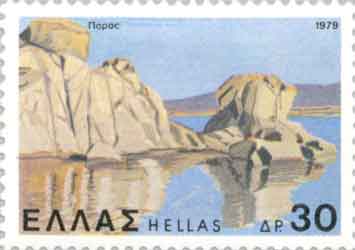 |
Balos, Dance Aegean Sea |
In 1537, Paros was conquered by the Ottoman Turks and remained under the Ottoman Empire until the Greek War of Independence (1821–1829). During the Russo-Turkish War (1768–1774) in 1770–1775 Naoussa Bay was the home base for the Russian Archipelago Squadron of Count Alexey Orlov. Under the Treaty of Constantinople (1832), Paros became part of the newly independent Kingdom of Greece, the first time the Parians had been ruled by fellow Greeks for over six centuries. At this time, Paros became the home of a heroine of the nationalist movement, Manto Mavrogenous, who had both financed and fought in the war for independence. Her house, near Ekatontapiliani church, is today a historical monument.
On 26 September 2000 the ferry MS Express Samina collided with the Portes islets off the bay of Parikia, killing 82 of those on board.[15]
Parikia
Main article: Parikia
Panoramic view over the bay of Parikia.
The capital, Parikia, situated on a bay on the north-west side of the island, occupies the site of the ancient capital Paros. Parikía harbour is a major hub for Aegean islands ferries and catamarans, with several sailings each day for Piraeus, the port of Athens, Heraklion, the capital of Crete, and other islands such as Naxos, Ios, Santorini, and Mykonos.
Panagia Ekatontapiliani in Parikia.
Parikia, Paros.
In Parikia town, houses are built and decorated in the traditional Cycladic style, with flat roofs, whitewash walls and blue-painted doors and window frames and shutters. Shadowed by luxuriant vines, and surrounded by gardens of oranges and pomegranates, the houses give the town a picturesque aspect. On a rock beside the sea are the remains of a medieval castle, built almost entirely of the marble remains of an ancient temple. Similar traces of antiquity, in the shape of bas-reliefs, inscriptions, columns, and so on, are numerous. On a rock shelf to the south are remains of a precinct which was dedicated to Asclepius. In addition, close to the modern harbour, the remains of an ancient cemetery are visible, having been discovered recently during non-archaeological excavations.
In Parikia's main square is the town's principal church, the Panagia Ekatontapiliani, literally meaning "church of the hundred doors". Its oldest features almost certainly predate the adoption of Christianity as the state religion of the Roman Empire in 391 AD. It is said to have been founded by the mother of the Roman Emperor Constantine the Great (ruled 306–337 AD), Saint Helen, during her pilgrimage to the Holy Land. There are two adjoining chapels, one of very early form, and also a baptistery with a cruciform font.
Parikia town has a small but interesting archaeological museum housing some of the many finds from sites in Paros. The best pieces, however, are in the Athens National Archaeological Museum. The Paros museum contains a fragment of the Parian Chronicle, a remarkable chronology of ancient Greece. Inscribed in marble, its entries give time elapsed between key events from the most distant past (1500 BC) down to 264 BC.[16]
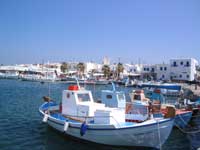

Paros, Marathi, Marbles Quarry
Fishing boats in Naoussa.
View of Lefkes village.
Traditional street of Lefkes.
Other settlements
On the north side of the island is the bay of Naoussa (Naussa) or Agoussa, which provides a safe and spacious harbour. In ancient times it was closed by a chain or boom. Another good harbour is that of Drios on the south-east side, where the Turkish fleet used to anchor on its annual voyage through the Aegean during the period of Ottoman rule over Paros (1537–1832).
The three villages of Dragoulas, Mármara and Tsipidos, situated on an open plain on the eastern side of the island, and rich in remains of antiquity, probably occupy the site of an ancient town. They are known together as the "villages of Kephalos" after the steep and lofty hill of Kephalos. On this hilltop stands the monastery of Agios Antonios (St. Anthony). Around it are the ruins of a medieval castle which belonged in the late Middle Ages to the Venetian noble family of the Venieri. They gallantly but vainly defended it against the Turkish admiral Barbarossa in 1537.
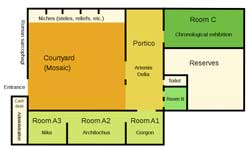
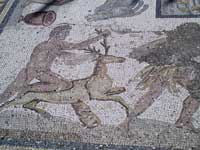
Archaeological Museum of Paros,
Another important settlement of the island Paros is Lefkes (Λεύκες). Lefkes is an inland mountain village 10 km (6 mi) away from Parikia. It is a picturesque village with narrow streets. A visitor could walk and enjoy the carefully whitewashed houses and streets with beautiful and colorful flowers. In the late 19th century, Lefkes was the center of the municipality of Iria which belonged to the Province of Naxos until 1912. The name of the municipality Iria was one of the ancient names of Paros. Lefkes was the capital of the municipality Iria which included the villages Angyria or Ageria, Aliki, Aneratzia, Vounia, Kamari, Campos, Langada, Maltes and Marathi. Iria became Lefkes Community following the law enforcement DNZ/1912 "On Municipalities". At that time, the village managed to achieve great economic development. In the 1970s many residents moved to Athens, Maroussi and Melissia due to urbanization. However, the last few years, tourism presented to be a new source of income for the locals that led to the reconstruction of homes and landscaping for a peaceful and sweet life. Lefkes joined the municipality of Paros With the Community Plan Kapodistrias. In the last census (2001) the population numbered 519 inhabitants.

The Paros Ekatontapyliani "hundred gates" church, according to a legend founded by Flavia Iulia Helena (later known as St. Helena), the mother of Constantine the Great. On her way to find the Holy Cross she visited Paros and founded Ekatontapyliani church (named lated so). Another monastery founded by Helena was again according to a legend the monastery Stavrovouni in Cyprus. The 4th century Ekatontapyliani is one of the oldest churches in Greece.
Marble quarries
Parian marble, which is white and translucent (semi-transparent), with a coarse grain and a very beautiful texture, was the chief source of wealth for the island. The celebrated marble quarries lie on the northern side of the mountain anciently known as Marathi (afterwards Capresso), a little below a former convent of St Mina. The marble, which was exported from the 6th century BC onwards, was used by Praxiteles and other great Greek sculptors. It was obtained by means of subterranean quarries driven horizontally or at a descending angle into the rock. The marble thus quarried by lamplight was given the name of Lychnites, Lychneus (from lychnos, a lamp), or Lygdos.[17] Several of these tunnels are still to be seen. At the entrance to one of them is a bas-relief dedicated to Pan and the nymphs. Several attempts to work the marble have been made in modern times, but it has not been exported in any great quantities. The major part of the remaining white marble is now state-owned and, like its Pentelic counterpart, is only used for archaeological restorations.
|
Paros (Parikia) Photo: Johan Hammerby |
Paros (Source) |
Notable people
Ancient
Agoracritus (5th century BC), sculptor
Archilochus (c. 680 BC-c. 645 BC), lyric poet
Scopas (c. 395-350 BC), sculptor and architect
Theoctiste of Lesbos (9th century), hermit saint
Thrasymedes (4th century BC), sculptor
Thymaridas (c. 400 BC-350 BC), mathematician
Modern
Vassilis Argyropoulos (1894–1953) actor
Nicholas Mavrogenes (1738–1790), prince of Wallachia
Athanasius Parios (1721/22-1813), theologian
Yiannis Parios (1946-), singer
Yiannis Ragousis (1965-), politician
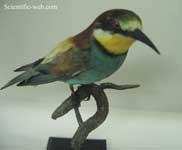
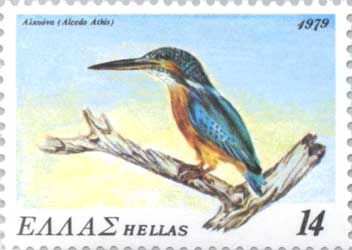
European Bee-eater (Merops apiaster) ( Μελισσοφάγος ), European Kingfisher (Alcedo atthis), ( Αλκυώνα )

Euplagia quadripunctaria
See also
Marble sculpture
Communities of the Cyclades
Aegean Center for the Fine Arts
Municipality Paros(Seat: Πάρος, η) |
|---|
| Municipal Community Naousa |
| Αγία Καλή Πάρου, η (νησίδα) |
| Agios Andreas (Άγιος Ανδρέας Πάρου, ο) |
| Agios Artemios (Άγιος Αρτέμιος Πάρου, ο (νησίδα)) |
| Ampelas (Αμπελάς Πάρου, ο) |
| Γαϊδουρονήσι Πάρου, το (νησίδα) |
| Galiatsos (Γαλιάτσος Πάρου, ο (νησίδα)) |
| Evriokastro (Εβριόκαστρο Πάρου, το (νησίδα)) |
| Καμάραι Πάρου, αι |
| Κολυμπήθρες Πάρου, οι |
| Lagkeri (Λάγκερη Πάρου, η) |
| Livadia (Λιβάδια Πάρου, τα) |
| Μαυρονήσι Πάρου, το (νησίδα) |
| Μονή Αγίου Αντωνίου, η |
| Μονή Λογγοβάρδας Πάρου, η |
| Naousa (Νάουσα Πάρου, η) |
| Xifara (Ξιφάρα Πάρου, η) |
| Protorgia (Πρωτόργια Πάρου, τα) |
| Τεταρτονήσι Πάρου, το (νησίδα) |
| Τούρλος Πάρου, ο (νησίδα) |
| Φιλίδι Πάρου, το (νησίδα) |
| Φοίνισσες Πάρου, οι (νησίδα) |
| Municipal Community Paros |
| Agios Spyridon (Άγιος Σπυρίδων Πάρου, ο (νησίδα)) |
| Agios Charalambos (Άγιος Χαράλαμπος Πάρου, ο) |
| Vounia (Βουνιά Πάρου, τα (Δ.Κ.Πάρου)) |
| Voutakos (Βουτάκος Πάρου, ο (Δ.Κ. Πάρου)) |
| Glysidia (Γλυσίδια Πάρου, τα) |
| Elitas (Έλητας Πάρου, ο) |
| Kakapetra (Κακάπετρα Πάρου, τα) |
| Kalami (Καλάμι Πάρου, το) |
| Kamares (Καμάρες Πάρου, οι) |
| Kampos (Κάμπος Πάρου, ο) |
| Κουκουμαυλές Πάρου, οι |
| Κρωτήρι Πάρου, το |
| Μονή Χριστού Δάσους Πάρου, η |
| Παράσπορος Πάρου, ο |
| Πάρος, η |
| Pounta (Πούντα Πάρου, η) |
| Sarakiniko (Σαρακίνικο Πάρου, το) |
| Sotires (Σωτήρες Πάρου, οι) |
| Χωριουδάκι Πάρου, το |
| Community Agkairia |
| Άγιος Ιωάννης Τρυπητής Πάρου, ο |
| Agkairia (Αγκαιριά Πάρου, η) |
| Alyki (Αλυκή Πάρου, η) |
| Aneratza (Ανερατζά Πάρου, η) |
| Βουτάκος Πάρου, ο (Τ.Κ.Αγκαιριάς) |
| Γλαρόμπουτα Πάρου, η (νησίδα) |
| Kamari (Καμάρι Πάρου, το) |
| Μακριά Μύτη Πάρου, η |
| Μικρονήσι Πάρου, το (νησίδα) |
| Μονή Αγίων Θεοδώρων Πάρου, η |
| Παντερονήσι Πάρου, το (νησίδα) |
| Τηγάνι Πάρου, το (νησίδα) |
| Community Archilochos |
| Agios Nikolaos (Άγιος Νικόλαος Πάρου, ο) |
| Glyfades (Γλυφάδες Πάρου, οι) |
| Marmara (Μάρμαρα Πάρου, τα( |
| Molos (Μώλος Πάρου, ο) |
| Prodromos (Πρόδρομος Πάρου, ο) |
| Tsoukalia (Τσουκαλιά Πάρου, τα |
| Community Kostos |
| Isterni (Ιστέρνι Πάρου, το) |
| Kostos (Κώστος Πάρου, ο) |
| Μαράθι Πάρου, το |
| Community Lefkes |
| Άσπρον Χωρί Πάρου, το |
| Vounia (Βουνιά Πάρου, τα (Τ.Κ.Λευκών)) |
| Glyfa (Γλυφά Πάρου, τα) |
| Λαγκάδα Πάρου, η |
| Lefkes (Λεύκαι Πάρου, αι) |
| Community Marpissa |
| Δρυονήσι Πάρου, το (νησίδα) |
| Dryos (Δρυός Πάρου, ο) |
| Μακρονήσι Πάρου, το (νησίδα) |
| Marpissa (Μάρπησσα Πάρου, η) |
| Πίσω Λιβάδι Πάρου, το |
| Pyrgaki (Πυργάκι Πάρου, το) |
| Τζάνες Πάρου, ο |
| Tourlos (Τούρλος Πάρου, ο) |
| Τσουκαλάς Πάρου, ο |
| Χρυσή Ακτή Πάρου, η |
References
Notes
^ "Parian - definition of Parian by the Free Online Dictionary, Thesaurus and Encyclopedia". Thefreedictionary.com. Retrieved 2009-05-06.
^ Heraclides De rebus publicis 8
^ Stephanos Byz.
^ Schol. Dionys. Perieg. 525; Herodian I.171
^ Thucydides Peloponnesian War IV.104; Strabo Geography 487
^ Zafeiropouloy F., and A., Agelarakis “Warriors of Paros”, Archaeology 58.1(2005): 30-35.
^ Diodorus Siculus XV.13
^ Herodotus Histories V.31
^ Herodotus op.cit. VI.133-136
^ Herodotus op.cit. VIII.67
^ Herodotus op.cit. VIII.112
^ Olympiodorus 88.4
^ Corpus Inscriptionum Graecarum 2376-2383; Ross, Inscr. med. II.147, 148
^ Diodorus Siculus XIII.47
^ "Ferry Disaster off Paros". Greek Island Hopping. Retrieved April 1, 2011. (WebCite archive)
^ Inscriptiones Graecae XII.100 seqq.
^ Pliny the Elder Historia Naturalis XXXVI. 5, 14; Plato Eryxias, 400 D; Athenodorus V.205 f; Diodorus Siculus 2.52
Sources
Clarke Travels III (London, 1814)
de Tournefort, J.R. Voyage du Levant I.232 seqq. (Lyon, 1717)
Leake, William Martin, Travels in Northern Greece III.84 seqq. (London, 1835)
This article incorporates text from a publication now in the public domain: Chisholm, Hugh, ed (1911). Encyclopædia Britannica (11th ed.). Cambridge University Press.
Greece :
A - B - C - D - E - F - G - H - I - J - K - L - M -
N - O - P - Q - R - S - T - U - V - W - X - Y - Z
| Ancient Greece
Science, Technology , Medicine , Warfare, , Biographies , Life , Cities/Places/Maps , Arts , Literature , Philosophy ,Olympics, Mythology , History , Images Medieval Greece / Byzantine Empire Science, Technology, Arts, , Warfare , Literature, Biographies, Icons, History Modern Greece Cities, Islands, Regions, Fauna/Flora ,Biographies , History , Warfare, Science/Technology, Literature, Music , Arts , Film/Actors , Sport , Fashion --- |
Retrieved from "http://en.wikipedia.org/"
All text is available under the terms of the GNU Free Documentation License



